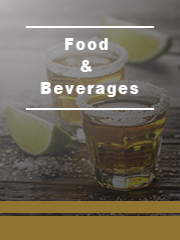Report overview
Food texture is a collective term of sensory experiences originated from visual, audio and tactile stimuli.
This report aims to provide a comprehensive presentation of the global market for Food Texture, with both quantitative and qualitative analysis, to help readers develop business/growth strategies, assess the market competitive situation, analyze their position in the current marketplace, and make informed business decisions regarding Food Texture. This report contains market size and forecasts of Food Texture in global, including the following market information:
Global Food Texture Market Revenue, 2018-2023, 2024-2029, ($ millions)
Global Food Texture Market Sales, 2018-2023, 2024-2029, (K MT)
Global top five Food Texture companies in 2022 (%)
The global Food Texture market was valued at US$ 23750 million in 2022 and is projected to reach US$ 29910 million by 2029, at a CAGR of 3.3% during the forecast period. The influence of COVID-19 and the Russia-Ukraine War were considered while estimating market sizes.
Globally, the food texture market is concentrated on North America, Europe, China etc. At the same time, North America occupied 34% production market share.
We surveyed the Food Texture manufacturers, suppliers, distributors and industry experts on this industry, involving the sales, revenue, demand, price change, product type, recent development and plan, industry trends, drivers, challenges, obstacles, and potential risks.
Total Market by Segment:
Global Food Texture Market, by Type, 2018-2023, 2024-2029 ($ Millions) & (K MT)
Global Food Texture Market Segment Percentages, by Type, 2022 (%)
Thickener
Gelling Agents
Emulsifier
Stabilizer
Other
Global Food Texture Market, by Application, 2018-2023, 2024-2029 ($ Millions) & (K MT)
Global Food Texture Market Segment Percentages, by Application, 2022 (%)
Baked Goods & Candy Snacks
Dairy Products & Frozen Foods
Meat & Chicken Products
Drinks
Snacks & Salty Taste
Sauce
Global Food Texture Market, By Region and Country, 2018-2023, 2024-2029 ($ Millions) & (K MT)
Global Food Texture Market Segment Percentages, By Region and Country, 2022 (%)
North America
US
Canada
Mexico
Europe
Germany
France
U.K.
Italy
Russia
Nordic Countries
Benelux
Rest of Europe
Asia
China
Japan
South Korea
Southeast Asia
India
Rest of Asia
South America
Brazil
Argentina
Rest of South America
Middle East & Africa
Turkey
Israel
Saudi Arabia
UAE
Rest of Middle East & Africa
Competitor Analysis
The report also provides analysis of leading market participants including:
Key companies Food Texture revenues in global market, 2018-2023 (Estimated), ($ millions)
Key companies Food Texture revenues share in global market, 2022 (%)
Key companies Food Texture sales in global market, 2018-2023 (Estimated), (K MT)
Key companies Food Texture sales share in global market, 2022 (%)
Further, the report presents profiles of competitors in the market, key players include:
Archer Daniels Midland
Ingredion
Ajinomoto
Cargill
Dupont
Kerry
Tate & Lyle PLC
CP Kelco
Avebe
Lonza
Naturex
Ashland
Nexira
Palsgaard
Fuerst Day Lawson
Outline of Major Chapters:
Chapter 1: Introduces the definition of Food Texture, market overview.
Chapter 2: Global Food Texture market size in revenue and volume.
Chapter 3: Detailed analysis of Food Texture manufacturers competitive landscape, price, sales and revenue market share, latest development plan, merger, and acquisition information, etc.
Chapter 4: Provides the analysis of various market segments by type, covering the market size and development potential of each market segment, to help readers find the blue ocean market in different market segments.
Chapter 5: Provides the analysis of various market segments by application, covering the market size and development potential of each market segment, to help readers find the blue ocean market in different downstream markets.
Chapter 6: Sales of Food Texture in regional level and country level. It provides a quantitative analysis of the market size and development potential of each region and its main countries and introduces the market development, future development prospects, market space of each country in the world.
Chapter 7: Provides profiles of key players, introducing the basic situation of the main companies in the market in detail, including product sales, revenue, price, gross margin, product introduction, recent development, etc.
Chapter 8: Global Food Texture capacity by region & country.
Chapter 9: Introduces the market dynamics, latest developments of the market, the driving factors and restrictive factors of the market, the challenges and risks faced by manufacturers in the industry, and the analysis of relevant policies in the industry.
Chapter 10: Analysis of industrial chain, including the upstream and downstream of the industry.
Chapter 11: The main points and conclusions of the report.
